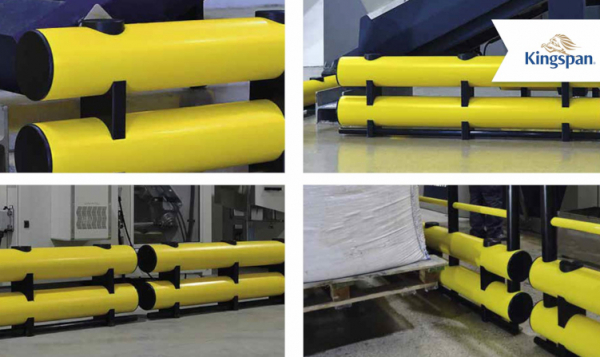Table of contents:
- What are industrial bump rails?
- Industrial bumpers - types
- Features of a good bumper - warehouse and industrial one
Industrial bumpers - what are they?
Industrial bumbers are elements that protect individual areas in all kinds of warehouse, industrial and production buildings. They comprise more and less elaborate guardrail systems. Their purpose - as the name implies - is to provide safety; both for the equipment in the building, the walls and doors, and for the workers - moving around the facility on foot and driving vehicles such as forklifts or lifts.
Types of industrial bump rails
Industrial bump rails are divided into several types - depending on their shape and purpose. The most popular are the long guardrails that form passageways in large facilities. Their task is to separate zones where vehicles will move and zones created exclusively for pedestrian traffic.
The second type is wall and corner bumpers in the form of protective strips, mainly skirting boards. They protect corners, columns and the lower parts of walls from damage caused primarily by heavy warehouse and industrial equipment. Individual steel bumpers in the form of posts, similar to road posts, are also available for sale. Their use is very wide and, depending on the location, they protect building corners as well as doors and walls with smaller areas.
As for the doors, a separate type of steel bumper is provided to secure them. These are large, complex structures that run the entire perimeter of the gateway. Designed to 'flex' safely upon impact with the vehicle or material being carried.
How do you know a good industrial bumber?
The key to creating good quality bumpers - warehouse, industrial and otherwise - is careful production, taking into account the right materials and following the highest standards. Protective systems must be made of durable , high-density plastic that is resistant to damage, yet flexible enough not to cause damage to machinery and equipment if they come into contact with it. They should effectively absorb impact energy and delineate and decongest traffic routes in the facility. It is good if they are easy to install and feature a simple design - then replacing the component involves minimal cost. However, ease of installation must go hand in hand with a robust anchoring system to prevent the collar from moving on its own, A tinting system is welcome, not just painting the collar - this provides guarantees of colour fastness, very important in terms of health and safety rules. If the protective system is to be used in a food storage area, it should have the appropriate approval/certification indicating that the item can be used in the vicinity of food. It is also worth bearing in mind that different industrial bumpers will work well indoors and others outdoors (e.g. on roofs). In order to perform their function well, they must be selected in accordance with the installation site.
